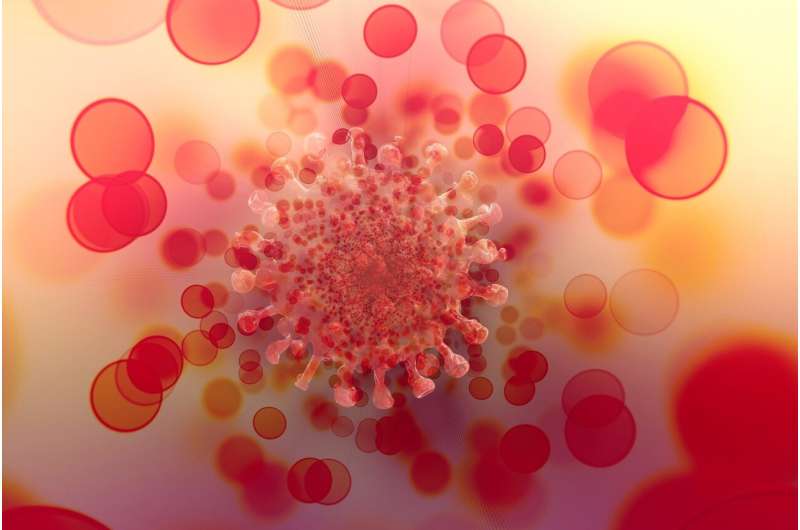Mutating Viruses Finding Their Replication Home In Us
"[This mutated version] has since then probably been circulating in a region of the world with poor viral surveillance and has now been repeatedly exported to other places in the world."Professor Francois Balloux, Britain"Such a high number of mutations is notable [it is similar to the number of mutations that differed between Delta, one of the early strains of the coronavirus, and Omicron].""When Omicron hit in the winter of 2021, there was a huge rise in COVID-19 cases because it was so different from the Delta variant, and it evaded immunity from both natural infection and vaccination." "The other concern is that this strain has been picked up in at least six countries, and the cases are unrelated. This suggests that there is some degree of transmission in the community that we’re not detecting that is happening internationally."Yale Medicine infectious diseases specialist Scott Roberts
 |
| There is some reason for concern that this variant,
unofficially nicknamed “Pirola,” has over 30 mutations to its spike protein. The spike protein is how the coronavirus enters human cells. Getty Images |
Writing in the British Medical Journal, Francois Balloux, professor of computational systems biology, director of University College London's Genetics Institute, felt the most plausible origin of this new variant known as Pirola was that an individual with an already-compromised immune system had been infected with an Omicron variant for a lengthy period of time and in that year or so the virus had ample opportunity to mutate until eventually the mutated version emerged, and the world community had yet another version of the original SARS-CoV-2 virus.
A totally new-and-improved (from the perspective of the virus) sub-variant of a COVID variant.
And thus, from an expert's point of view, was BA.2.86 ('Pirola'), the new coronavirus variant born, to be inflicted upon the world's unwilling hosts. The fear lingering in the minds of the medical community, visualizing another sweeping series of global lockdowns, is that the Pirola variant having undergone an unusually large number of mutations on the mutated virus's spike proteins -- over 30 altogether it was determined, in comparison to previous common variants -- that it may be super-efficient in evading immune responses of COVID antibodies.
The virus's ease in penetrating human cells thanks to mutations on its spike proteins is considered a vital replication strategy with the disease onset. With any possible new advantages in the mutated virus more infections and/or a worse disease emerging would take the world back to a Stage 1 scenario -- with COVID-19 overwhelming hospitals with serious infections and renewed high mortality rates, particularly among the elderly.
In the last short while, epidemiological data indicate the rise of hospitalizations and increased outbreak reports -- a general, still slight uptick in cases at a time when a decline in infections and serious illnesses lulled the world into a sense of complacency. Evidence has not yet arisen, however, that Pirola is a transmissibility and virulence threat. For the time being it has been noted that the strain does not appear to cause particularly severe illness.
The U.S. Centers for Disease Control and Prevention stated that: "Based on what CDC knows now, existing tests used to detect and medications used to treat COVID-19 appear to be effective with this variant. At this time, we don't know how well this variant spreads, but we know that it spreads in the same way as other variants." Officially. scientists refer to the new virus as BA.2.86.
 |
| Credit: PixabayCCO Public Domain |
"Nobody knows right now, but studies are ongoing. The biggest concern has been the number of mutation differences with BA.2.86. When we went from XBB.1.5 to EG.5, that was maybe one or two mutations, and they were expected. With every respiratory virus, as it spreads from person to person, it evolves gradually over time. But these massive shifts, which we also saw from Delta to Omicron, are worrisome.""The big question is if BA.2.86 will have the same exponential growth that Omicron did—in terms of case numbers—or if it will die out, which is certainly what everyone hopes.""Since the original version of SARS-CoV-2, many people have gotten infected, and many have been boosted. However, for many of us, it might have been a year or more since we’ve had a booster, so I would encourage everyone to get the updated shot, which is expected to come out in mid-September."Yale Medicine infectious diseases specialist Scott Roberts
Labels: "Pirola", Mutations, New Variant, SARS-CoV-2

0 Comments:
Post a Comment
<< Home